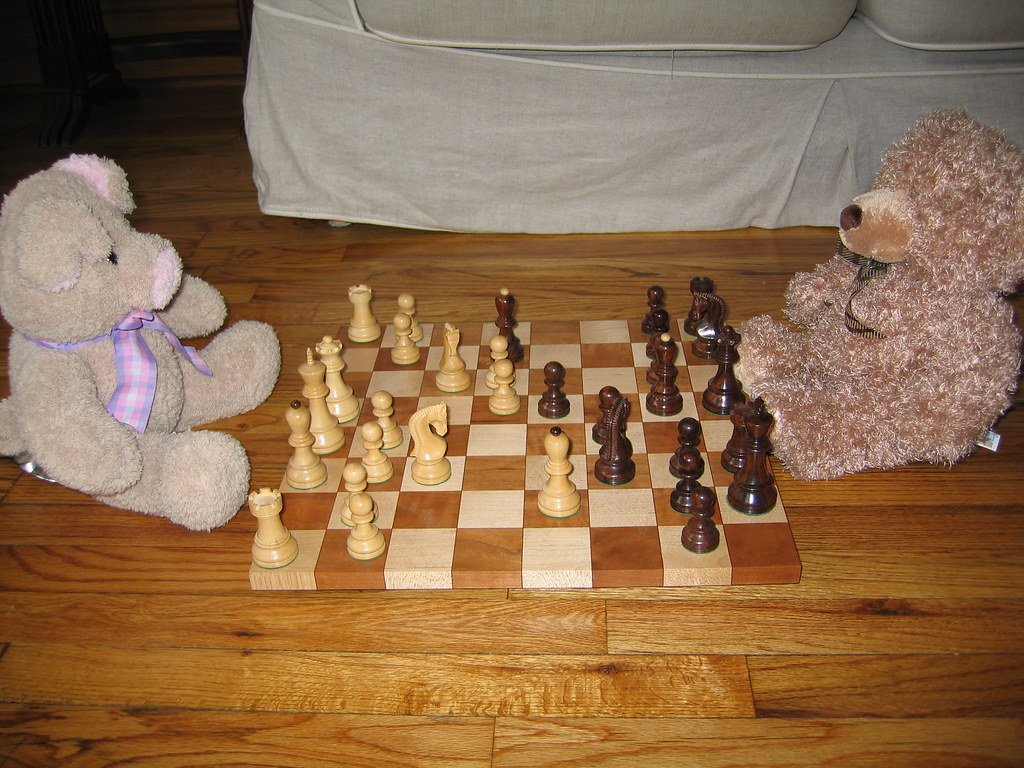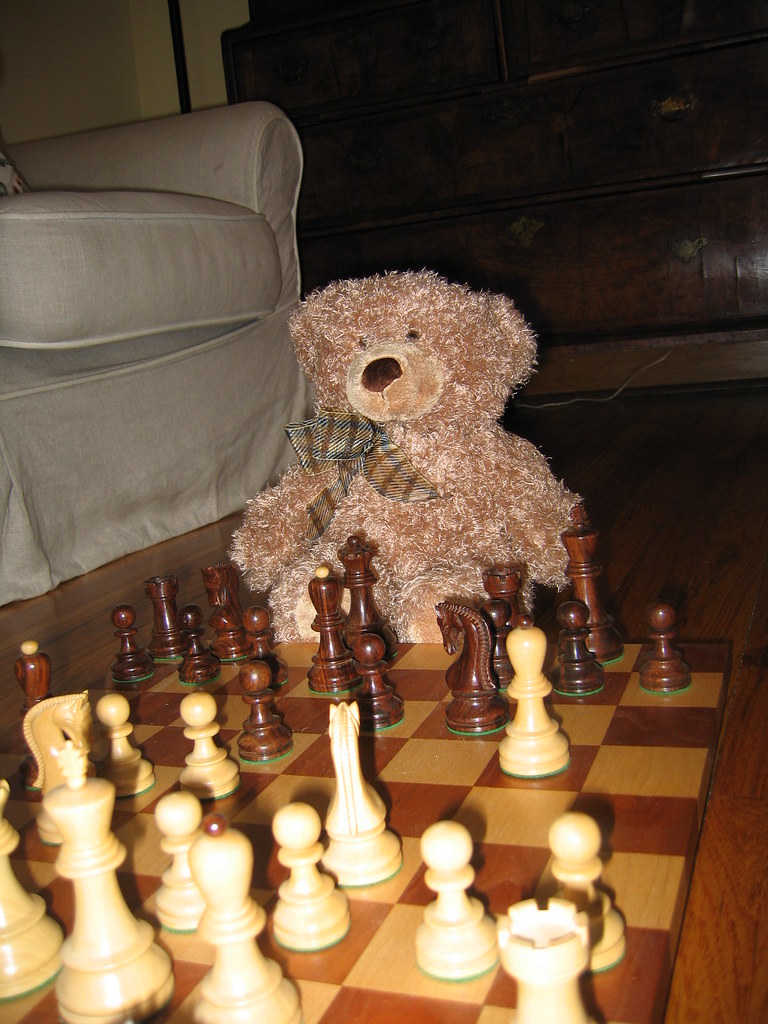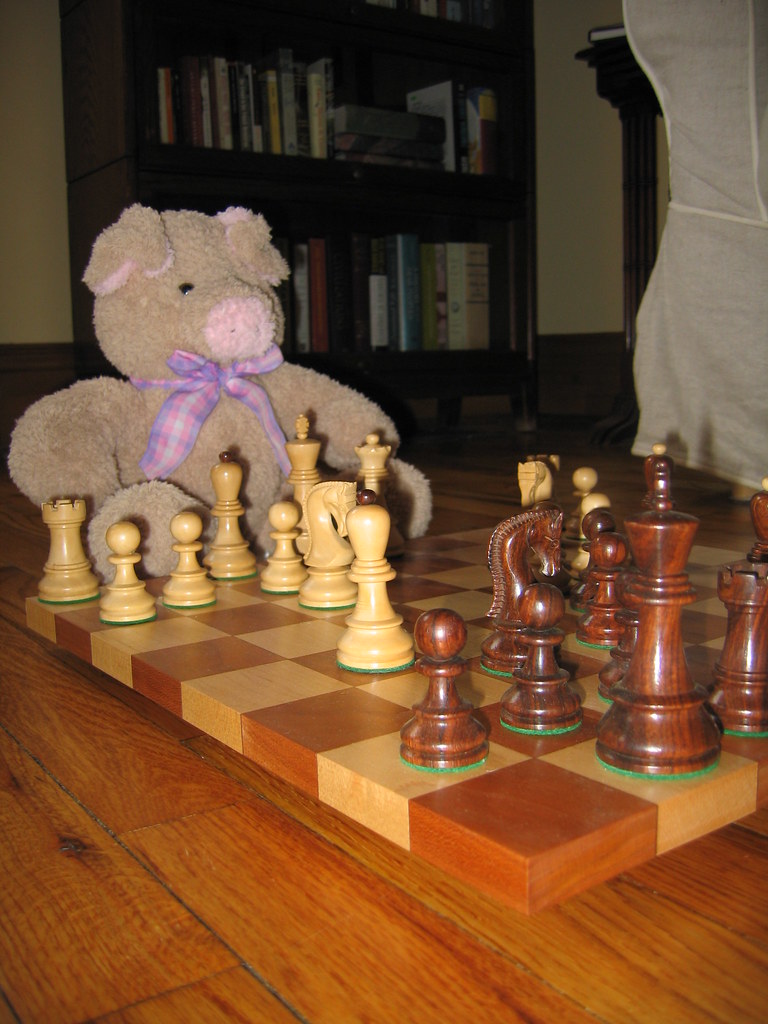Training Games
The bears are still abuzz about the newfound friends on the internet, however, Bear and Pi must complete their training before being sent to their new homes. One area of neglect has been game playing. The reader might find it surprising that I feel a young bear should be taught to play games. Any bear can fumble its way through tea parties and other role playing games. Moreover, most childhood board games require no skill other than rule adherence and the ability to draw a card. In fact, given the general lack of cognitive ability required to play games aimed at children, I have long suspected that the manufacturers have teddy bears in mind as opponents rather than adults. I pity the weary adult who must endure endless games of Sorry! and Hi, Ho, Cheerio. Such games develop no talents other than a tolerance for tedium. I worry that competitive games of chance reify childish notions of asymetrical blame attribution (i.e., I win because of my skill, but a loss is the result of poor luck). These games of pure chance are not worthy of valuable educational time. Rather, we devoted our attention to the game of kings ... chess!
Chess is an elegant game that teaches a young bear the importance of spacing, timing, coordination, resource optimization, sequencing, cause and effect, and a whole host of other laudatory intellectual skills. The players begin with equal resources and position. With no die rolls to muddy the waters, a loss can only be blamed upon the opponent's superior strategy and tactics. A good bear should steer its person towards such noble enterprises and away from the mindless tripe that passes for entertainment.

After a brief introduction to the rules and a tutorial from yours truly, Bear and Pi began to play. Pi immediately took a fancy to the rooks, perhaps because of the short and squat shape of the pieces. As a result, Pi initially tried rook pawn openings to utilize his rooks. The harassment Bear provided Pi's rooks quickly disabused Pi of this notion, so Pi moved to more traditional king and queen pawn openings.
Bear demonstrated a fluid and deceptive style quite shocking for a novice player. Rather than meet Pi's thrusts head on, Bear would quietly develop pieces and allow Pi to over-extend himself. Naturally, Bear's favorite defense was the Sicilian. Pi rapidly grew frustrated with his mounting losses.
 Bear's smile cloaks his cutthroat play. Bear's smile cloaks his cutthroat play. |  Pi is the picture of tenacity. Pi is the picture of tenacity. |
In due time, Pi learned to temper his aggressive impulses and the value of positional play. Now, once Pi gains a slight positional advantage, he will relentlessly exploit the slight weakness in his opponent's defense. After two weeks of steady practice, I found myself struggling to beat both Bear and Pi on a consistent basis. I think any young child with a sliver of intellectual curiosity will greatly appreciate the strategic acumen of young Bear and Pi.







0 Comments:
Post a Comment
<< Home